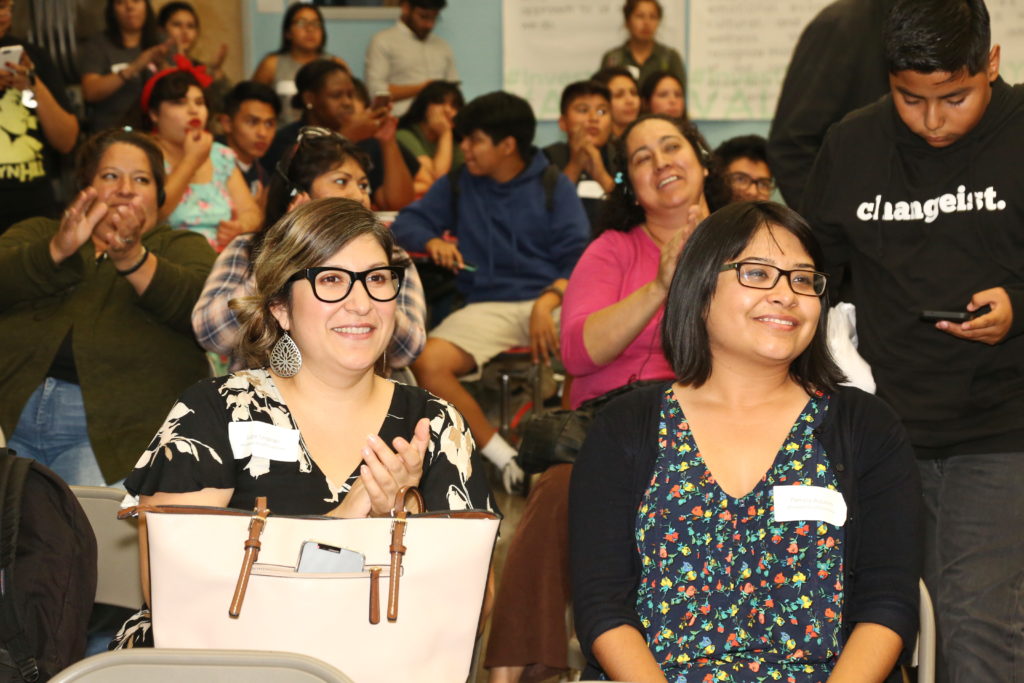For over 10 years, beginning in 2010, The California Endowment (TCE) invested $1.75 billion and partnered with 14 communities across California as well as many state-level organizations and alliances, on Building Healthy Communities (BHC), an innovative initiative to achieve more equitable health outcomes. During that period, BHC deployed communication and narrative change strategies more proactively than prior community change initiatives had done—or been able to. TCE sought to influence and shape public opinion as a prerequisite for changing state policies and as support for local activism. These efforts produced memorable campaigns such as “Health4All” which created a vision of health insurance coverage for all Californians and “Schools Not Prisons” which was an emotional appeal to eliminate youth incarceration.
TCE had no playbook to follow. But they learned, and their lessons contributed not only to refining their own strategy going forward, but to the growing body of knowledge about narrative change.
TCE is striving to expand beyond a traditional communications strategy and connect more intentionally with power building and the ecosystem that advances power building. The emerging strategy seeks to “disrupt the underlying beliefs that perpetuate health and racial inequity, and advance new narratives that make the case for an inclusive society where everyone belongs”. (i.e. Health4All or Schools Not Prisons)
To that end, TCE commissioned PolicySolve to learn about existing narrative change capacities and what are needed among the organizations and leaders seeking to change the narratives that influence health and racial equity. TCE recognized that it was critical to enter into discussion without a predetermined definition of “capacity,” but rather explore it with participants across the power-building ecosystem. The participatory design engaged over 40 narrative change practitioners and power builders within California and nationally in shaping the study focus, data sources, and interpretation of results.
The resulting report explores what was learned about the capacity needs of those working to shift narratives to positively influence health and racial equity. A pullout from the report offers insights that can help funders who are committed to advancing such change. This blog focuses on a particular learning related to the ways in which narrative change work is implemented.
Approaches to Narrative Change
Study participants articulated a diverse array of approaches and ways of understanding narrative change, all of which grapple with the intersection of building power and changing narratives. (Table 1) The diversity of approaches is not surprising given the emergent nature of narrative change where there are no “best practices” or widely agreed upon ways of advancing change.
Many participants reported that their organizations engage in multiple approaches, depending on the coalitions and consultants with whom they are working.
Table 1. Four complementary approaches to narrative change

Insights about Capacities Needed
Across these four approaches, participants reported the need for many different capacities as well as the need for more resources across all capacities to fully implement strategies. (Table 2)
Table 2. Critical narrative change capacities
Only one capacity was repeatedly identified as over funded—the engagement of national communications firms. Participants did not believe these firms shared their values, brought enough value for the cost, offered relevant products, or built local capacity. Instead, they asked that smaller, more value-aligned firms be engaged in work going forward.
Scaling & Aligning Narratives
Most, though not all, study participants saw a need and opportunity to align around shifting narratives, thus scaling the impact of any given narrative change. Across the four approaches, the ways of scaling narrative change differed, as did the sense of success in scaling:
- Some participants, particularly those who centered community voice and work within a smaller geographic area (all using Approach A), tended to see alignment as difficult to achieve and were not concerned whether it happens.
- Most of the participants whose organizations centered community voice but also worked at scale (those using Approach B), saw aligning narratives as possible through deep engagement and power building with many different communities. These participants reported they have already seen successes in aligning narratives across communities.
- For other participants (most of whom were using Approach C), scaling was predicted to happen by reaching new audiences in significant numbers, including those well outside the base, often with a focus on the “persuadable middle.” These interviewees also reported that their experiences doing this work was challenging enough that aligning narratives felt daunting.
- For those with a statewide or regional advocacy focus (Approach D), narrative scaling is already happening through coalition building across communities and working together on aligned narratives, often with clear policy goals as the starting place. They reported feeling fairly positive about the potential of additional alignment work.
Feedback to Funders
The core message participants had for funders regarding how they support narrative change was: step back, release control, and trust us. Trust the people in communities leading this work; trust the partnerships that exist already; trust the messages that emerge from communities; and step back and give room for communities to have power. Specifically, this can include:
- Put trust in the processes that you fund
- Support communities to advance narrative change
- Support more narrative change capacity
- Be less directive in the support you offer
- Allow the time for collaborative processes
- Offer flexibility, providing room for experiments and adaptations
- Be more innovative yourself
- Step back, and only step in where asked
- Embed narrative change capacity in existing social movements and coalitions
The study participants were clear: narrative change needs funders who will support this work and support it in ways that recognize and trust the people in the communities leading this work.
BHC has generated a broad and deep body of knowledge. Click here for more information about TCE’s decade of learning.
